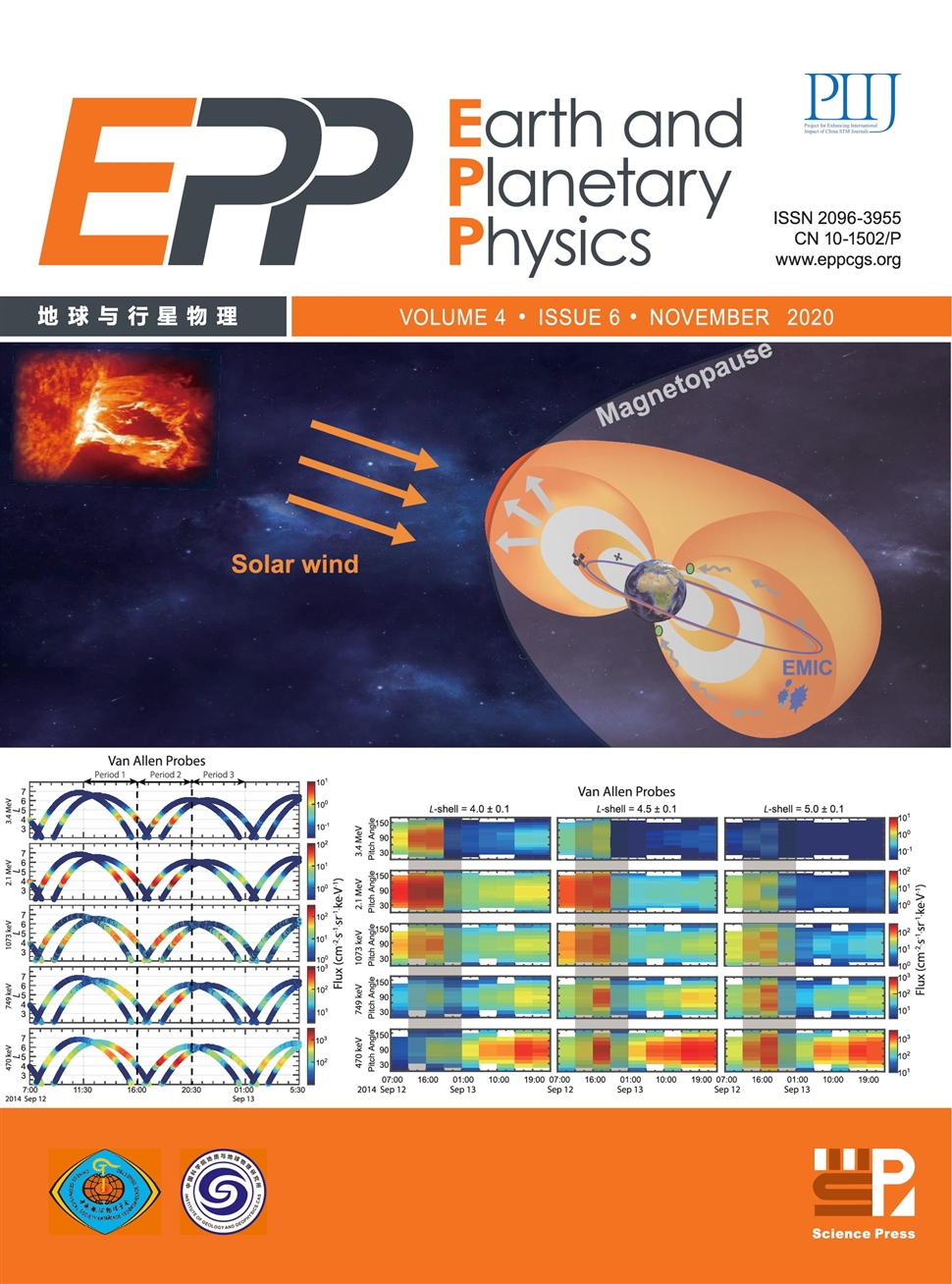EUV-dependence of Venusian dayside ionopause altitude:VEX and PVO observations
作者:QianQian Han,Markus Fraenz,Yong Wei,Eduard Dubinin,Jun Cui,LiHui Chai,ZhaoJin Rong,WeiXing Wan,Yoshifumi Futaana
摘要:The Venusian dayside ionosphere, similar to other planetary ionospheres, is produced primarily by ionization of its neutral upper atmosphere due to solar extreme ultraviolet (EUV) radiation. It has become clear that the expansion of the ionosphere may be strongly controlled by the EUV level, as exhibited in data collected by the Pioneer Venus Orbiter (PVO) during one solar cycle (1978 1992). However, the EUV-dependence of the Venusian dayside ionopause altitude, which defines the outer boundary of the ionosphere, remains obscure because the PVO crossed the dayside ionopause only during the solar maximum;its periapsis lifted too high during the solar minimum. Recently, during the period 2006 2014, which included the longest and quietest solar minimum of the past several decades, Venus Express (VEX) provided measurements of the photoelectron boundary (PEB) over the northern high-latitude region. Since the photoelectron boundary is closely related to the ionopause, we have an opportunity to analyze the EUV effect on the dayside ionopause by combining PVO and VEX observations. We have evaluated and then reduced the orbit bias effect in data from both PVO and VEX, and then used the results to derive a relationship between solar EUV level and the dayside ionopause altitude. We find that the dayside ionopause altitude increases as the solar EUV level increases, which is consistent with theoretical expectations.
发文机构:Key Laboratory of Earth and Planetary Physics Beijing National Observatory of Space Environment College of Earth and Planetary Sciences Max-Planck-Institute for Solar System Research Institutions of Earth Science School of Atmospheric Sciences Key Laboratory of Lunar and Deep Space Exploration Swedish Institute of Space Physics
关键词:VENUSionopauseIONOSPHEREsolaractivity
分类号: P35[天文地球—空间物理学][天文地球—地球物理学]
- Inertial gravity waves observed by a Doppler wind LiDAR and their possible sources
- Anomaly distribution of ionospheric total electron content responses to some solar flares
- Editorial Committee of Earth and Planetary Physics
- Mars Ion and Neutral Particle Analyzer (MINPA) for Chinese Mars Exploration Mission (Tianwen-1): Design and ground calibration
- The source of tropospheric tides
- Morphology and possible origins of the Perm anomaly in the lowermost mantle of Earth
- Characteristics of the quasi-16-day wave in the mesosphere and lower thermosphere region as revealed by meteor radar,Aura satellite,and MERRA2 reanalysis data from 2008 to 2017
- An ICME impact on the Martian hydrogen corona
- Treatment of discontinuities inside Earth models:Effects on computed coseismic deformations
- Recent investigations of the near-Mars space environment by the planetary aeronomy and space physics community in China


